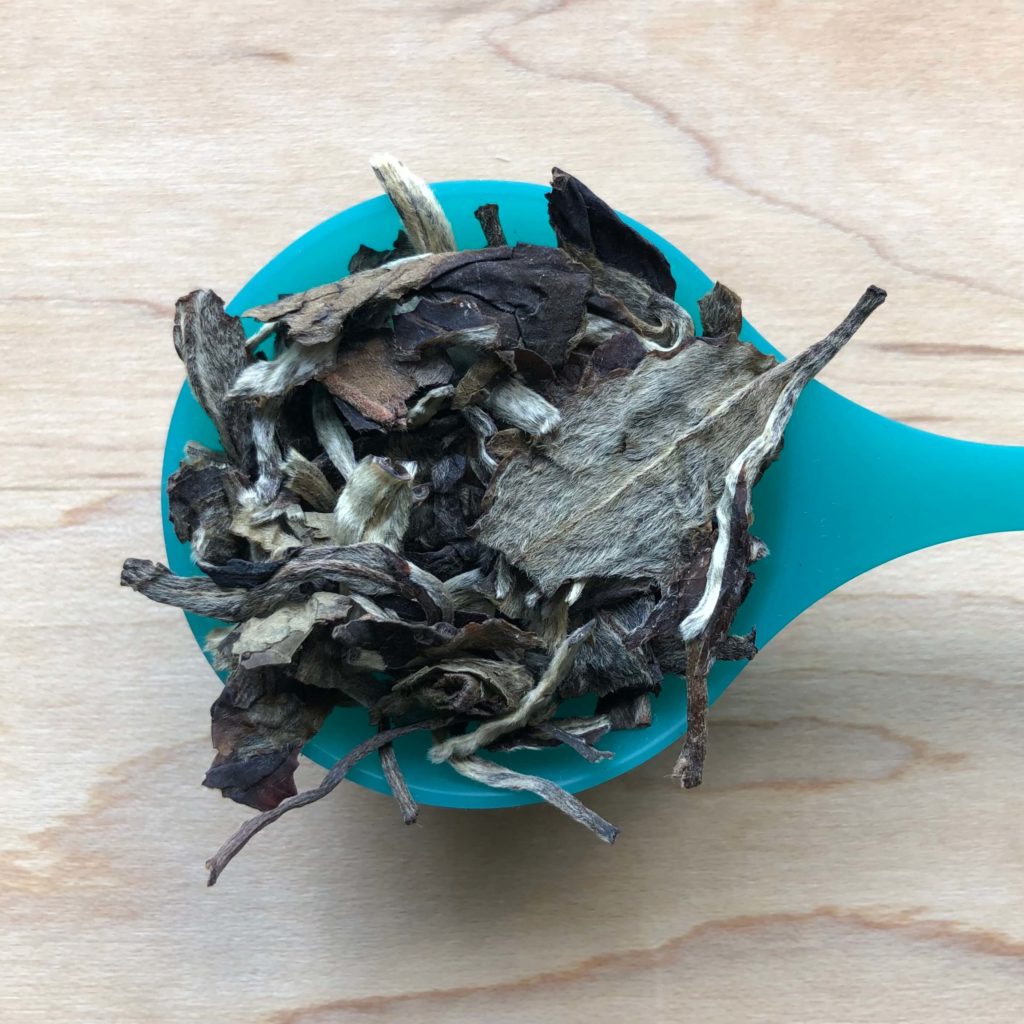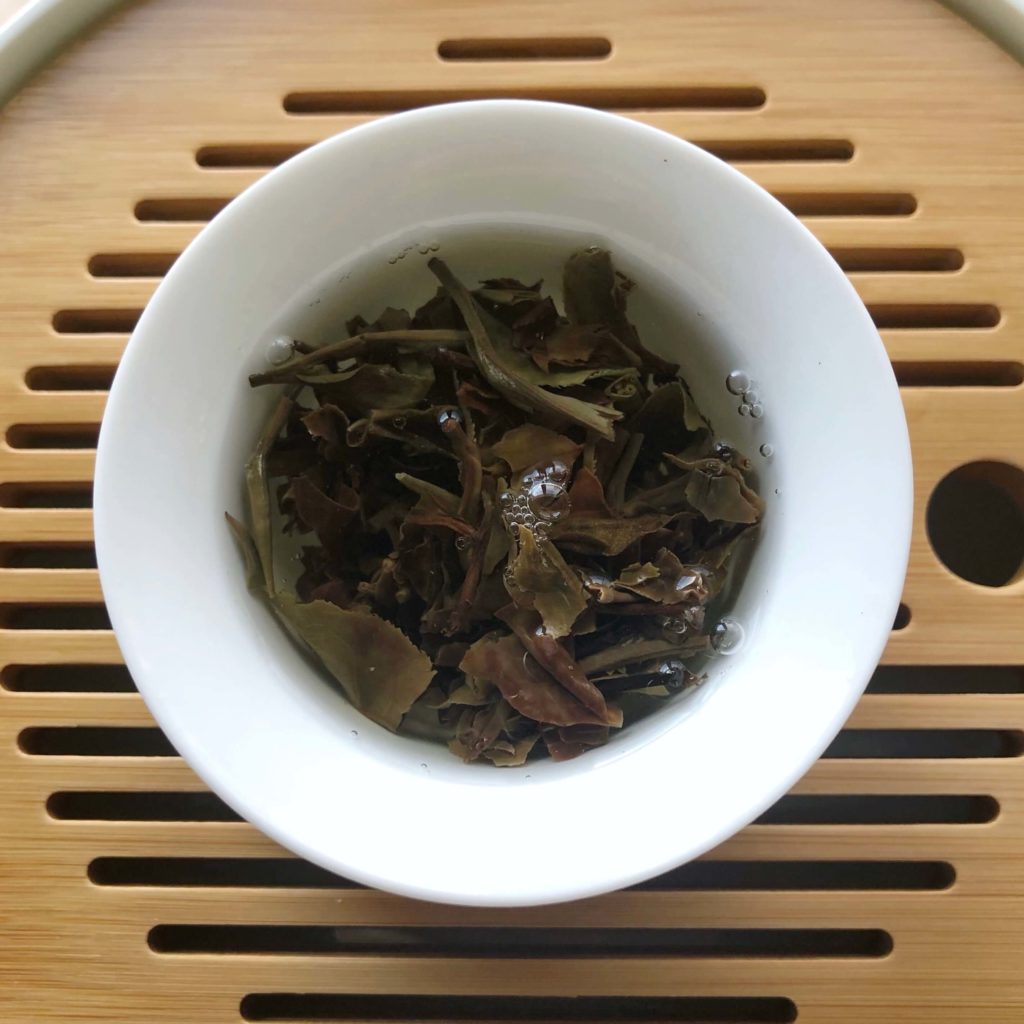
When I first saw the name of this tea, I honestly wasn’t sure what to expect. But when the description explained that the tea was made from material that is “typically used for puer,” I was intrigued.
Description: “This tea has a crisp, clear fragrance up front and a long lasting sweetness in the mouth and throat. The flavour plays a delicate balancing act between floral and fruity.”
Instructions: 90°c to boiling | 1 gram per 15-20 ml of water*
* I asked Bitterleaf Teas for steeping recommendations as it was not listed on the website
Review: The dry tea cake had a lovely marbling of large shiny silvery buds mixed with dark, almost black, and olive-brown leaves. It was made of Bai Mudan grade tea (1 bud, 2 leaves) from Wuliang Mountains in Yunnan. The cake had a faint floral, earthy, and hay smell. I brewed this tea a few times using 3 to 4 grams of tea and 90°c to 100°c of water.
Pre-warmed gaiwan: After the tea was added to the warmed vessel, the dry leaves had a sweet, floral, and honey smell.
Quick rinse: The rinse had no discernable smell, colour, or taste. It reminded me of sugarcane water and quickly became drying at the back of the throat.
Infusion 1 (5 seconds): There was no strong smell from the liquor, but there was a mildly sweet and earthy/barnyard note that dissipated.

Infusion 2 (10 seconds): The liquor started to have a faint apple juice yellow colour and a floral and hay smell. It had sweet, flowery, hay and a faintly herbaceous note. It reminded me of a classic Bai Mudan and wasn’t as drying as prior infusions.
Infusion 3 (15 seconds): Becoming a deeper yellow-amber colour, the liquor had a similar tasting profile as the previous infusion. It also had an underlying medical or licorice flavour.
Infusion 4 (20 seconds): There was a subtle nutty and floral smell to the apple colour liquor. It tasted of roses and hay with a trace of bitterness.
Infusion 5 (25 seconds): The flavour started to wane and was mostly bitter and drying.

The wet leaves had a fresh, floral and vegetal smell. It was a mixture of long buds and broken earthy brownish and green leaves. Regardless of the temperature or amount of leaf, the liquor started to wane in taste after the 5th infusion, which is pretty long-lasting for a white tea.
After steeping the tea a few times, it seemed to have a sweeter quality when brewing with cooler water temperature compared to using hot water which brought out a herbous and earthy note. Especially with more tea and higher temperature, the taste was quite “forceful” for white tea and the earthy notes were unexpected! I wonder if some of that is due to the base material.
This is a white tea that is worth trying to taste how the base tea material can impact a tea or to see how varying tea temperatures can impact the taste. Normally, I find increased temperature tends to affect intensity but this one actually had a different profile which was unexpected. This was a nice tea to taste and explore (3/5 rating).
- Type: White tea
- Origins: China, Wuliang Mountains, Yunnan
- Caffeine: Unknown
- Ingredients: White tea
- Company: Bitterleaf Teas
The question of the post: What do you look for in white tea?

4 comments
Dang! Those leaves are so fluffy!!!!
Right! A fluffy bunch!
Those leaves though 😮
Right?? So fluffy!